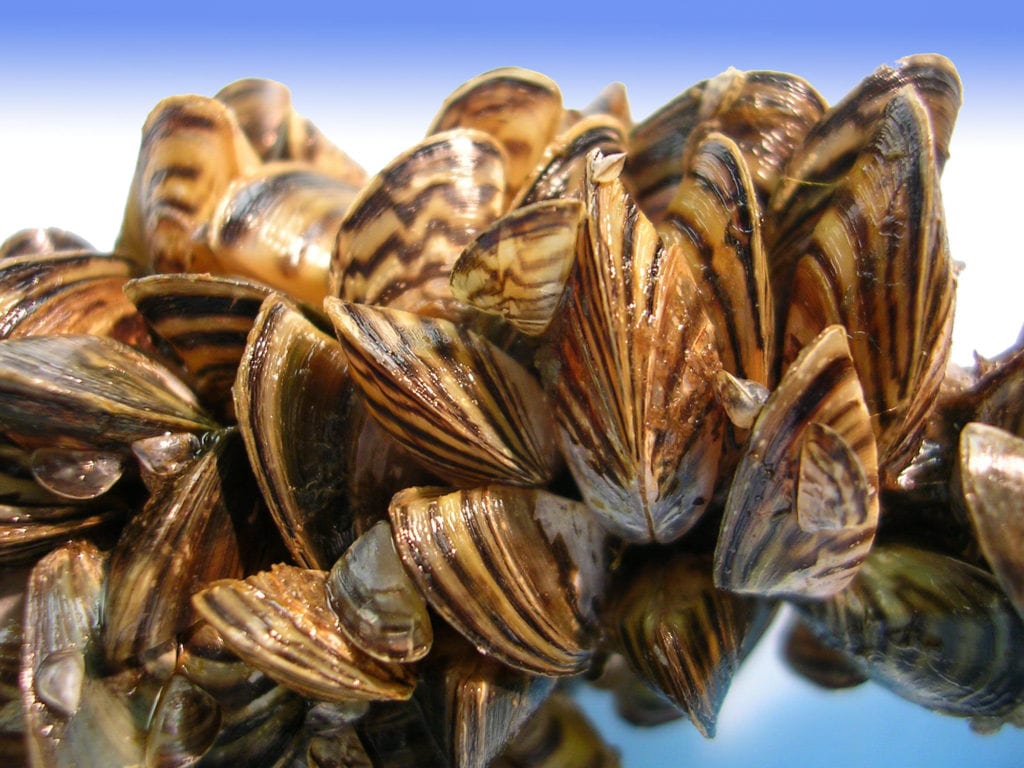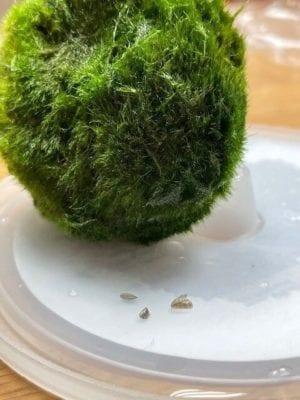
An invasive species never before seen in Alaska has arrived by hitchhiking on moss balls used in aquariums. Zebra mussels, named for their striped shells, have colonized areas around the Great Lakes and the Mississippi and Missouri river basins, lowering property values and interfering with hydroelectric power generation, according to an Alaska Department of Fish and Game report.
“Zebra mussels are considered a highly invasive species in Alaska and pose a great threat to the state’s freshwater environments,” said ADF&G invasive species coordinator Tammy Davis, in a release. “It could be extremely detrimental to aquatic habits in Alaska if zebra mussels were inadvertently introduced in any freshwater system in the state. It is imperative that we take measures to ensure that this does not happen.”
Zebra mussels are native to some of the same Eastern European freshwater environments as the species of algae that grows in dense balls commonly known as “moss balls.” As the mussels mature, they attach to a structure such as a moss ball. Recently, moss balls containing zebra mussels were distributed across the U.S., having been discovered in at least 32 states, said Aaron Martin, regional invasive species program coordinator for the U.S. Fish and Wildlife Service. Not all zebra mussels attached these moss balls are readily visible to the eye, Martin said.
Like the filter-feeding zebra mussel, some juvenile fish also eat plankton. If zebra mussels were set loose in Alaska’s waterways, they could end up competing with salmon and other fish for food, Martin said. Zebra mussels have also been known to interfere with infrastructure, clogging pipes and costing hydroelectric facilities hundreds of millions of dollars in maintenance. In some Great Lakes waterfront areas, property values have been impacted by zebra mussel infestations.
“When the zebra mussels get really well established and a lot of them are growing and dying, you end up with a ton of them on beaches,” Martin said. “It turns a nice sandy beach into a nasty, sharp, mussel-laden beach, so it’s not very fun for bare feet anymore.”

USFWS recommends that moss balls be disposed of in sealed containers in the trash, and not disposed of using a drain. Before disposal, it’s recommended that a moss ball be rendered safe by freezing for at least 24 hours, by boiling for at least 60 seconds or by submerging in bleach or undiluted white vinegar for 20 minutes. USFWS also recommends that aquariums be thoroughly cleaned, and that aquarium water be sterilized before pouring down the drain. Details of USFWS-recommended decontamination methods can be found at cdv.tiny.us/zebra.
The pet trade sometimes offers invasive species a pathway across national borders, Martin said. The invasive water weed elodea, which was first spotted in Alaska in Eyak Lake in 1982, is believed to have initially entered the lake through aquarium dumping, according to a Department of Agriculture report. “Don’t Let It Loose,” a USFWS-sponsored initiative, was created to discourage pet owners from releasing pets that could become invasive species.
Moss balls have been pulled from store shelves across the U.S., and companies like PetSmart and Petco have offered refunds for certain moss ball products. USFWS is working with the pet store industry at the national level to ensure that moss balls entering the U.S. in the future are more thoroughly inspected, Martin said.





